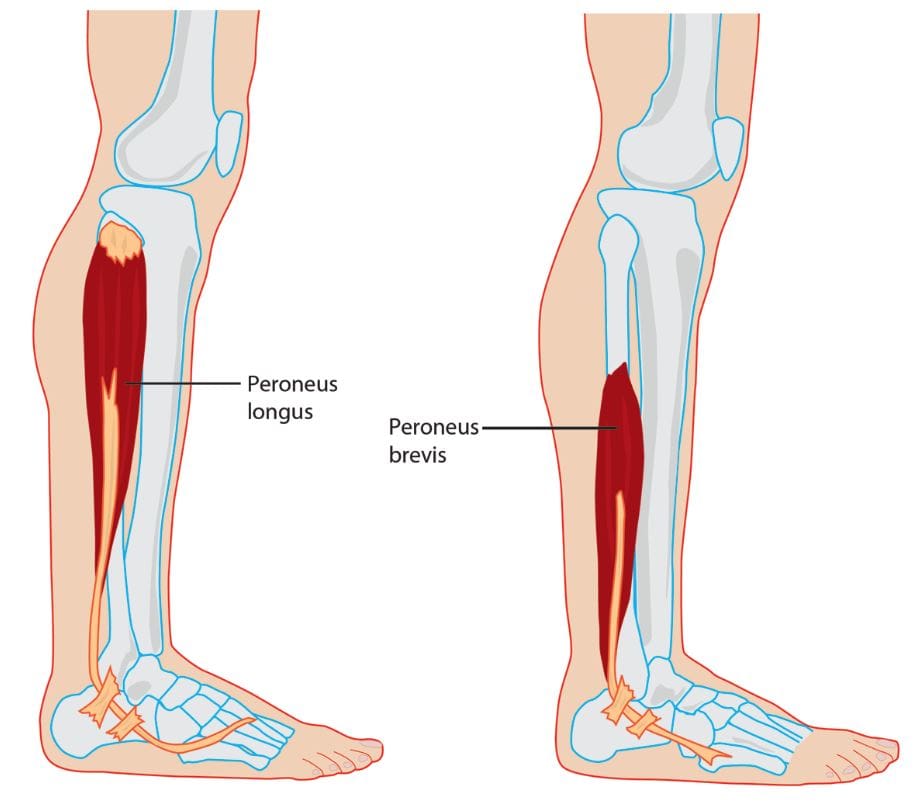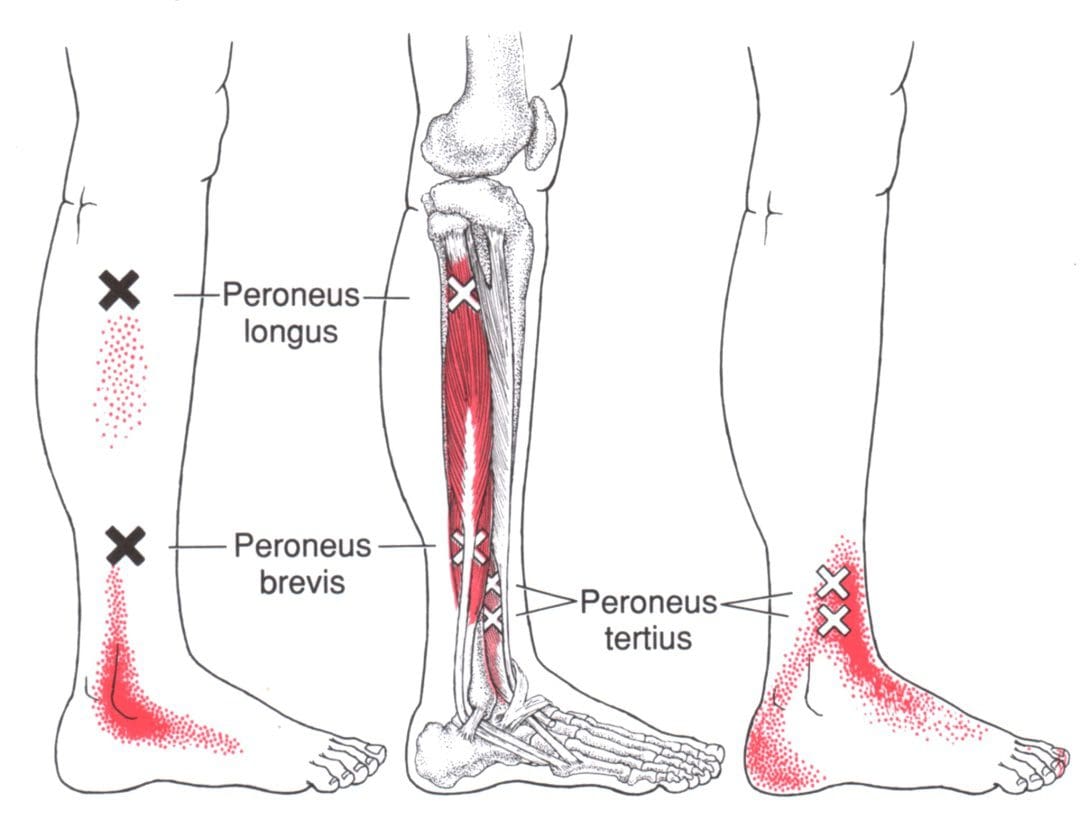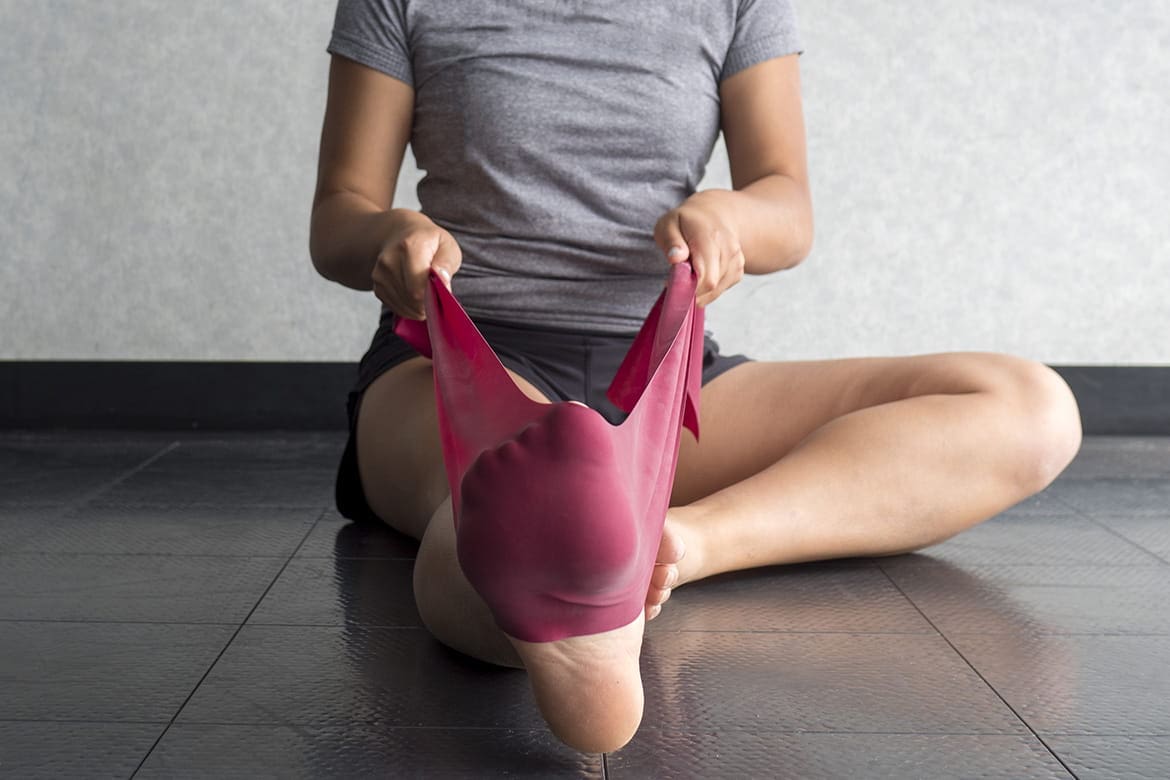Table of Contents
Introduction
The ankles and the lower legs have a casual relationship by allowing movement to the foot that causes an up-and-down motion. The lower leg has various muscles and tendons that surround the shin bone and allows the feet to take the body from one location to another. The peroneal muscles in the legs allow ankle stability to ensure that the weight from the host’s body doesn’t cause overload to the legs and ankles. However, factors like obesity, trauma, or overexerting can cause the peroneal muscles to be inflamed and develop issues like weak ankles or trigger points that can cause referred pain to the ankles and affect how a person walks. Today’s article examines the peroneal muscles, how weak ankles correlate with trigger points, and ways to strengthen the ankles while managing trigger points. We refer patients to certified providers that incorporate various techniques in the lower body extremities, like lower leg and ankle pain therapies correlating to trigger points, to aid many people dealing with pain symptoms along the peroneal muscles, causing weak ankles. We encourage and appreciate each patient by referring them to associated medical providers based on their diagnosis when it is appropriate. We understand that education is an excellent way when asking our providers intricated questions at the patient’s request and understanding. Dr. Alex Jimenez, D.C., only utilizes this information as an educational service. Disclaimer
The Peroneal Muscles On The Ankles
Have you been experiencing pain when walking around constantly? What about feeling a sharp or dull ache in the back or side of your legs? Or do you feel like falling when you are just standing around? Many people experiencing these issues on their legs and ankles could be dealing with trigger points along the peroneal muscles in the ankles. The peroneal muscles consist of two muscles in the lateral compartment of the lower legs: the peroneus longus and peroneus brevis. The peroneus longus is an important long muscle in the lower legs as it is at the top of the fibula and then runs down the outer leg while connecting to the foot. One of the primary functions of the peroneus longus is allowing plantarflex and evert the foot at the ankle. This means that the peroneus longus helps provide motor strength and range of motion to the ankles.

The peroneus brevis is one of the shorter peroneal muscles in the legs that go down to the ankles and provides assistance to allow eversion to the foot and plantarflexion to the ankles. This shorter muscle is important since the ankle joint is relatively mobile and needs stability from the surrounding ligaments and muscles. These two muscles work together for ankle stability when walking and positioning when the body is moving. Studies reveal that depending on a person’s environment, the peroneal muscles allow support and stability to the ankle in various positions. A good example is if the foot is placed in a sloped position, the peroneal muscles and the surrounding ligaments help stabilize the ankle so it won’t induce pain, causing the individual not to fall over.
Weak Ankles & Trigger Points

When factors like obesity, trauma, or injuries begin to affect the lower half of the body, it can cause instability in the legs and cause the surrounding muscles, tendons, and ligaments to be overstretched, take on more of an overload to the legs, or suffer from a muscle or tendon tear. These factors are associated with various issues that can invoke pain along with developing trigger points along the lower legs. When there are issues in the peroneal muscles, it can lead to muscle weakness in the ankles or “weak ankles,” which causes instability in the body and causes the individual to sprain their ankles. Studies reveal that when the peroneal tendons have a tear in the lower extremities, it can lead to lateral ankle pain that is often missed when examined. However, to that point, if the incision has been left untreated, it can lead to persistent ankle pain, instability, and ankle dysfunction. In “Myofascial Pain and Dysfunction,” written by Dr. Janet G. Travell, M.D., stated that when individuals suffer from weak ankles or have an ankle sprain, active trigger points can cause pain and tenderness to the ankles and cause the person to become unstable. If left untreated, it can cause them to lose balance and have foot drop and ankle fractures to their foot. The book also mentioned that any ruptures in the tendons and muscles might cause lateral compartment syndrome. When there is instability in the ankles, many people resort to using mobility aids like a cane or a walker to be mobile to compensate for the function lost in their feet.
Trigger Point Therapy On The Peroneal Muscles- Video
Do you feel the pain from the bottom of your feet to your ankles? Does it hurt to walk around for a short period? Or have you sprained your ankle, and there is a dull ache when you try to rotate? Some ankle issues are associated with trigger points affecting the peroneal muscles. The peroneal muscles help the lower legs by allowing eversion to the foot and plantarflexion to the ankles. The two muscles that make up the peroneal muscles are the peroneus longus and the peroneus brevis, and they, along with the other tendons and ligaments, help with ankle stability. Since the ankle is a mobile joint, it can succumb to sprains, tears, and instability in the body, allowing trigger points to develop and causing even more issues. The great news is that there are ways to manage trigger points along the peroneal muscles and reduce ankle instability. The video above shows where the peroneal muscles are located on the leg, where the trigger points are, and how to use K-tape to help support the ankle and prevent more injuries on this moveable joint.
Strengthening The Ankles & Managing Trigger Points

Instability in the ankles can be a bummer to many individuals that are on the move, but when it comes to treatment, it can prevent future injuries from re-occurring. Studies reveal that when pain specialists incorporate joint mobilization techniques and dry needling therapy into their patients, it can allow them to reduce the pain and disability to the ankles, thus managing the trigger points along the peroneal muscles. Another way many people can reduce pain in their peroneal muscles is by incorporating stretches and exercises to strengthen their ankles. This allows the peroneal muscles to be loose and gently stretched while slowly strengthening the ankles in a semi-lock position. When people utilize these techniques on their legs and ankles, it can bring mobility and stability back to the body without fear of falling or causing more issues in the ankles.
Conclusion
As one of the most mobile skeletal joints in the lower body, the ankles work together with the legs to provide mobility and stability to the body. The lower legs have various muscles, tendons, and ligaments that travel down and help support the legs and ankles. One of the muscles that provide that support is the peroneal muscle. The peroneal muscles consist of two muscles known as the peroneus longus and peroneus brevis help with eversion to the foot and allow plantarflexion to the ankle. When a person has sprained their ankle, it causes the peroneal muscle to become overstretched and develop trigger points. The great news is that trigger points are treatable, and various treatments can reduce pain in the affected muscle. This allows stability and mobility back to the ankles and improves the body’s functionality.
References
Abd-Rasid, A F, and M Y Bajuri. “Isolated Peroneus Longus Tear – Commonly Missed Diagnosis of Lateral Ankle Pain: A Case Report.” Malaysian Orthopaedic Journal, U.S. National Library of Medicine, July 2020, www.ncbi.nlm.nih.gov/pmc/articles/PMC7513650/.
Basit, Hajira, et al. “Anatomy, Bony Pelvis and Lower Limb, Foot Peroneus Brevis Muscle.” In: StatPearls [Internet]. Treasure Island (FL), StatPearls Publishing, 8 Feb. 2022, www.ncbi.nlm.nih.gov/books/NBK535427/.
Lezak, Bradley, and Matthew Varacallo. “Anatomy, Bony Pelvis and Lower Limb, Calf Peroneus Longus Muscle.” In: StatPearls [Internet]. Treasure Island (FL), StatPearls Publishing, 25 Aug. 2022, www.ncbi.nlm.nih.gov/books/NBK546650/.
Salom-Moreno, Jaime, et al. “Trigger Point Dry Needling and Proprioceptive Exercises for the Management of Chronic Ankle Instability: A Randomized Clinical Trial.” Evidence-Based Complementary and Alternative Medicine : ECAM, U.S. National Library of Medicine, 2015, www.ncbi.nlm.nih.gov/pmc/articles/PMC4430654/.
Travell, J. G., et al. Myofascial Pain and Dysfunction: The Trigger Point Manual: Vol. 2:the Lower Extremities. Williams & Wilkins, 1999.
Disclaimer
General Disclaimer
Professional Scope of Practice *
The information herein on "Peroneal Muscles, Weak Ankles, & Trigger Points" is not intended to replace a one-on-one relationship with a qualified health care professional or licensed physician and is not medical advice. We encourage you to make healthcare decisions based on your research and partnership with a qualified healthcare professional.
Blog Information & Scope Discussions
Welcome to El Paso's Premier Wellness and Injury Care Clinic wellness blog, where Dr. Alex Jimenez, DC, FNP-C, a board-certified Family Practice Nurse Practitioner (FNP-C) and Chiropractor (DC), presents insights on how our team is dedicated to holistic healing and personalized care. Our practice aligns with evidence-based treatment protocols inspired by integrative medicine principles, similar to those found on dralexjimenez.com, focusing on restoring health naturally for patients of all ages.
Welcome to El Paso's Premier Wellness and Injury Care Clinic & wellness blog, where Dr. Alex Jimenez, DC, FNP-C, a board-certified Family Practice Nurse Practitioner (FNP-C) and Chiropractor (DC), presents insights on how our team is dedicated to holistic healing and personalized care. Our practice aligns with evidence-based treatment protocols inspired by integrative medicine principles, similar to those found on dralexjimenez.com, focusing on restoring health naturally for patients of all ages.
Our areas of chiropractic practice include Wellness & Nutrition, Chronic Pain, Personal Injury, Auto Accident Care, Work Injuries, Back Injury, Low Back Pain, Neck Pain, Migraine Headaches, Sports Injuries, Severe Sciatica, Scoliosis, Complex Herniated Discs, Fibromyalgia, Chronic Pain, Complex Injuries, Stress Management, Functional Medicine Treatments, and in-scope care protocols.
Our information scope is limited to chiropractic, musculoskeletal, physical medicine, wellness, contributing etiological viscerosomatic disturbances within clinical presentations, associated somato-visceral reflex clinical dynamics, subluxation complexes, sensitive health issues, and functional medicine articles, topics, and discussions.
We provide and present clinical collaboration with specialists from various disciplines. Each specialist is governed by their professional scope of practice and their jurisdiction of licensure. We use functional health & wellness protocols to treat and support care for the injuries or disorders of the musculoskeletal system.
Our videos, posts, topics, subjects, and insights cover clinical matters, issues, and topics that relate to and directly or indirectly support our clinical scope of practice.*
Our office has reasonably attempted to provide supportive citations and has identified the relevant research studies or studies supporting our posts. We provide copies of supporting research studies available to regulatory boards and the public upon request.
We understand that we cover matters that require an additional explanation of how they may assist in a particular care plan or treatment protocol; therefore, to discuss the subject matter above further, please feel free to ask Dr. Alex Jimenez, DC, APRN, FNP-BC, or contact us at 915-850-0900.
We are here to help you and your family.
Blessings
Dr. Alex Jimenez DC, MSACP, APRN, FNP-BC*, CCST, IFMCP, CFMP, ATN
email: coach@elpasofunctionalmedicine.com
Licensed as a Doctor of Chiropractic (DC) in Texas & New Mexico*
Texas DC License # TX5807
New Mexico DC License # NM-DC2182
Licensed as a Registered Nurse (RN*) in Texas & Multistate
Texas RN License # 1191402
ANCC FNP-BC: Board Certified Nurse Practitioner*
Compact Status: Multi-State License: Authorized to Practice in 40 States*
Graduate with Honors: ICHS: MSN-FNP (Family Nurse Practitioner Program)
Degree Granted. Master's in Family Practice MSN Diploma (Cum Laude)
Dr. Alex Jimenez, DC, APRN, FNP-BC*, CFMP, IFMCP, ATN, CCST
My Digital Business Card




















